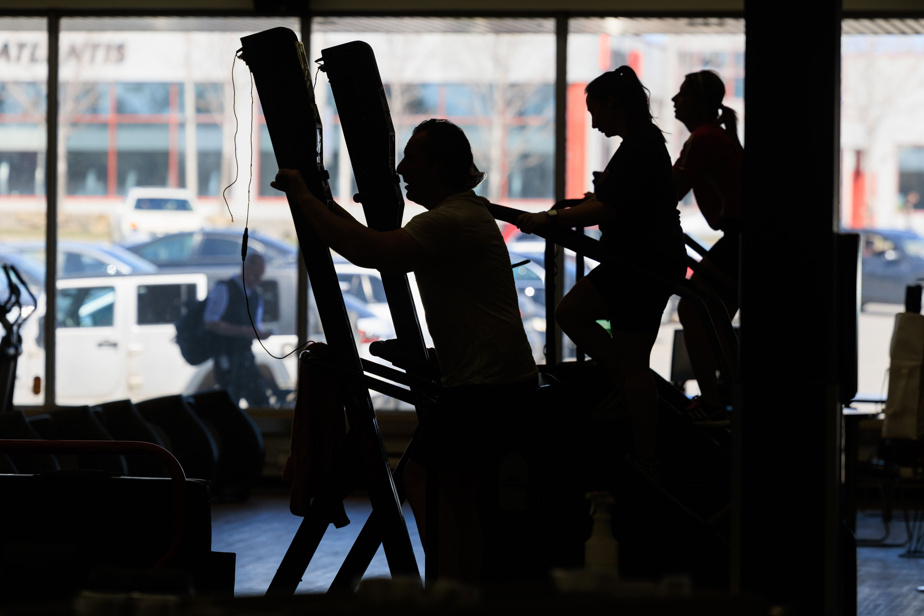Between two meetings, some workers go to the gym to train. Others write a report while getting a pedicure. The flexibility of schedules generated by teleworking has generated busy periods during the week, in the middle of the day, in many gyms and other beauty salons. Unheard of before the pandemic.
And this new reality, which makes it possible to balance peak hours, has a beneficial effect on turnover, say entrepreneurs interviewed by The Press.
Devoting time to one’s well-being is obviously no longer an activity that is exclusively part of the end-of-day or weekend schedule. Many gym owners can attest to this. “We’ve become a destination for relaxing in the middle of the day,” says Gabriel Hardy, CEO of the Canadian Fitness Industry Council (CCICP).
Also owner of the Le Chalet gym in Quebec City, Mr. Hardy notes that, on weekdays, his group classes at 10 a.m., 11 a.m. and noon are now full. While the halls located in the city center receive much less business clientele, those in the suburbs and regions are more frequented during the day than before.
“People go to train at the gym located closer to their homes,” also observes Karine Larose, director of communications and marketing for Nautilus Plus, which has about thirty branches in the greater Montreal area, in Quebec and in Gatineau. As a result, venues downtown, such as the Nautilus Plus Montréal Trust, are less crowded than before at lunchtime, in particular. And it was the students who replaced many of the workers on the stationary bikes.

PHOTO HUGO-SÉBASTIEN AUBERT, THE PRESS
People seem to be taking longer than before the pandemic to run on the treadmill or lift weights.
In addition, the morning, noon and the end of the day remain the main times favored by training enthusiasts to go to the gym closest to their home. But people seem to be taking longer than before the pandemic to run on the treadmill or lift weights. “Lunch time has stretched a lot,” says Ms.me The Rose. And workers at the end of the day arrive earlier, around 3:30 p.m. instead of 5 p.m. »

PHOTO HUGO-SÉBASTIEN AUBERT, THE PRESS
Mornings, lunchtimes and the end of the day remain the main times favored by workout enthusiasts to get to the gym closest to their homes.
Virtual consultations with trainers and nutritionists are still popular, suggesting that people at home are more comfortable with this kind of exchange than they would be if they were still in the office, also believes Karine Larose.
good for business
And this flexibility also rhymes with profitability for some beauty salons. “Before, during the day, until 4 p.m., it was quiet,” says Laura Valentina Caceres, co-owner of Primerose, which specializes in particular in pedicures and manicures.
However, the advent of telecommuting has put an end to certain “dead periods” for this company located on the Plateau Mont-Royal.

PHOTO MARCO CAMPANOZZI, THE PRESS
Laura Valentina Caceres, co-owner of Primerose beauty salon
It was good for the show. People come during their break or at lunchtime. They bring their computer.
Laura Valentina Caceres, co-owner of Primerose beauty salon
Another neighborhood. Same comment. Downtown, Vincent Poirier, co-owner of the Suite 105 hair salon by Glam, also recognizes that working from home has had a positive impact on his business. “What we notice is that the traffic is more constant, more regular. Before, we were busier towards the end of the week. Now we are busier on Tuesdays. People tell us that they come between two meetings. »

PHOTO MARCO CAMPANOZZI, THE PRESS
“Allowing employees to have flexible schedules creates loyalty to the company,” explains Manon Poirier, Executive Director of the Order of Certified Human Resources Advisors.
Although the salon is located downtown, Mr. Poirier still attracts as many customers. He has a hard core of regulars who are willing to travel longer distances to sit in his chair. And now, he says, clients are also more flexible with appointment times and more willing to show up at the last minute when called to offer them a seat after. a cancellation.
More flexibility, more efficiency
While these changes in the organization of working hours are positive for companies which are faced with a better distribution of customers, the possibility of going to the hairdresser at the beginning of the afternoon on Tuesdays or taking a Zumba on Thursdays at 10 a.m. is also beneficial for employers, says Manon Poirier, executive director of the Order of Certified Human Resources Advisors. “Allowing employees to have flexible schedules creates loyalty to the company. »
According to her, it is wrong to think that a worker who takes an hour to get his hair cut in broad daylight is less efficient. “He will do everything he has to do and even more. » Mme Poirier recalls that in the context of a labor shortage, schedule flexibility is synonymous with attractiveness.
The labor shortage is here to stay. You have to embrace this kind of practice.
Manon Poirier, Executive Director of the Order of Certified Human Resources Advisors
“And it’s not a complete letting go,” she insists. Most organizations require people to be available at certain times. At some point, you also need cohesion. »
